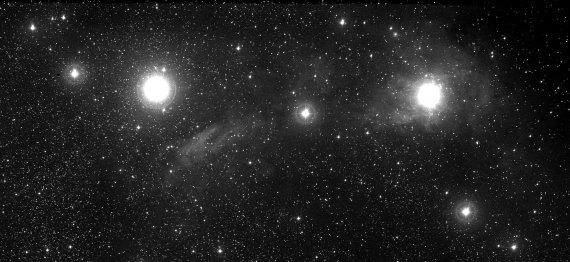
 |
HR 1035 at left and HR 1040 at right are both related to dusty interstellar clouds that reflect or, more accurately, scatter their starlight. The scattering process is much more efficient toward shorter spectral wavelengths, which gives the "reflection nebulae" a bluish color, not seen here in this early black and white photograph. (Palomer Sky Survey.) |